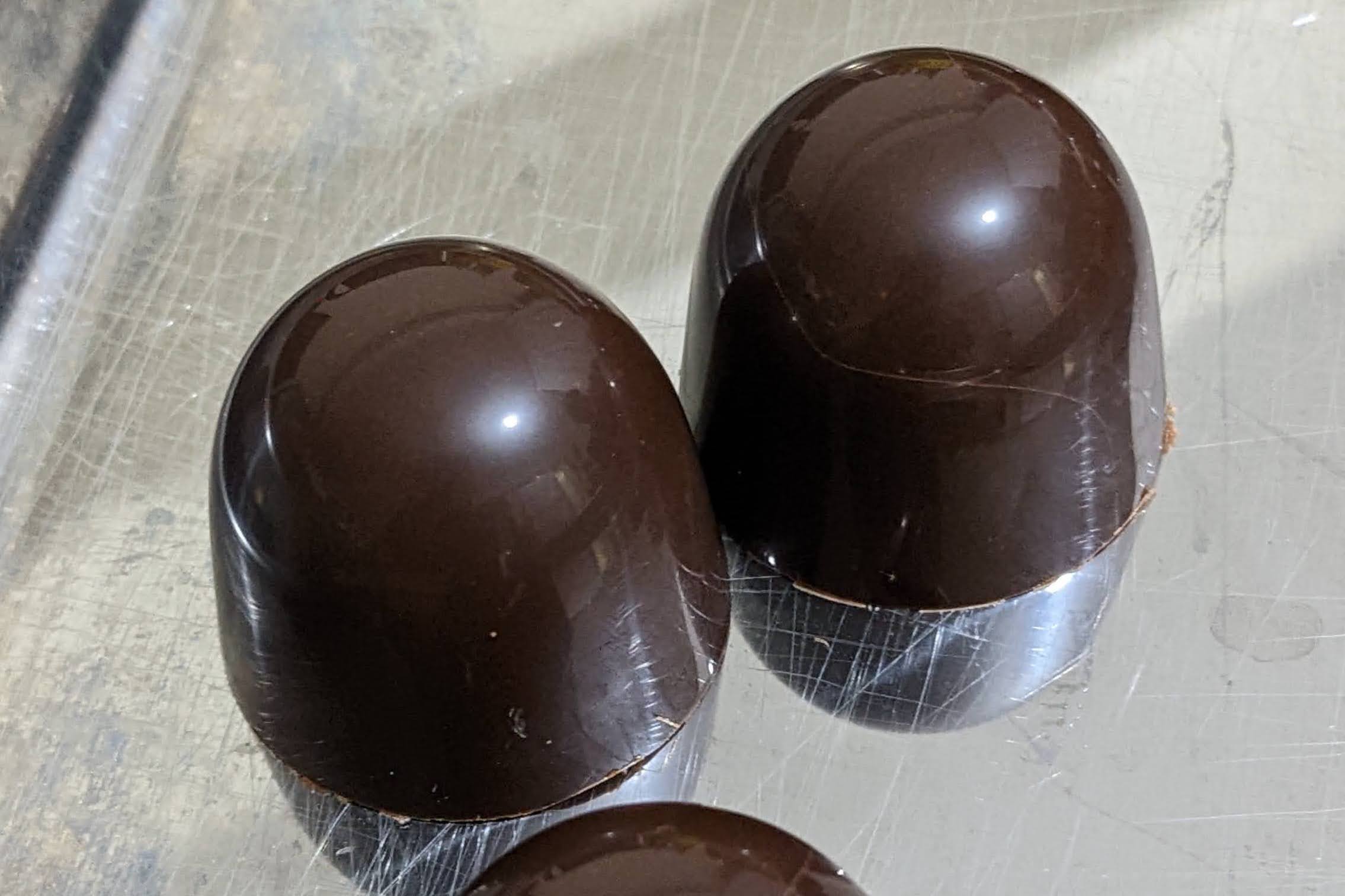For the last part of my baking school program, I interned for a chocolatier. I was lucky because he was quite a mentor and candidly revealed so much about owning a chocolate shop. There are lots of ups and down, and while there are many reasons why a person would want to own a store, you should brace yourself for whatever could come, like a pandemic.
Being able to create for work is fun.
Chocolate is both art and science, and being able to play with flavors and textures was fun. It’s exciting to experiment and come up with what works.
A chocolate shop should have about a dozen options that are bestsellers and a few experimental ones that can be offered seasonally.
It’s important to have the basic flavors that everyone loves and buys regularly; think salted caramel, hazelnut, and simple chocolate options. But you also need a few new flavors/products to get people to come in more often than just the holidays. But don’t overdo the number of options or production and storage will be a nightmare.
You become a part of the neighborhood.
Even while the retail part of the business was closed and he was focused on wholesale, customers kept stopping by to chat and see if he had anything for sale. (And they were all characters.) You build relationships, and hopefully the customers return and buy from you.
Don’t put things on sale or give things away too often.
People start expecting that you will give them your items for free. You have to value your product and business enough to set the right price and have people buy them.
Be careful who you partner with.
A good investor is hard to find, and while I was interning, the chef was regularly pitching to an investor. But he had a complicated relationship with the last one with bounced checks, among other issues. Make sure you do your research.
The pandemic hit small businesses really hard.
Before the pandemic, there was a lot of foot traffic in New York. Business was good and profitable. But once the pandemic happened, the chef had to pivot strategy and partner with an investor. But even through 2023, there were still fewer people walking by the shop and it may take a while longer.
There are lots of costs.
In addition to the obvious costs, such as rent, ingredients, and wages, there are so many others. There are various types of insurance, trash collection, Internet, electricity. There’s a reason why handmade chocolates cost ~$4 each.
There are lots of ways to make money, in addition to simply being a retail store.
Corporate events: You can produce chocolates for big companies that may have product launches or celebrations.
Mail: Chocolate is a shippable product, as long as there’s sufficient shelf life and good packaging. A great way to expand a business is to have your products be available online and mailed.
Teaching courses: People love learning something new and doing something fun, even if it’s just for a couple hours. Chocolate is such a mysterious product to people, and depending on how much you charge, you can make a lot.
Hosting events: In addition to hosting classes, the chef partnered with a wine company to host a tasting with pairings.
An owner should work production to keep their skills sharp.
While it seems like a fine idea to let someone else do production so that the owner can focus on other aspects of the business, it’s important for the owner to do some production. At the end of the day, the chocolate business relies on the product, and if a production assistant leaves, the owner has to be able to produce at the same quality to stay in business.
A salary job with benefits may be the new dream.
Owning a shop is hard and making it profitable is even harder. After years of ups and downs, including dealing with the pandemic, the hustle can become exhausting. The chef was clear that he would ideally be paid a salary with benefits and would pivot his business, if he could.

